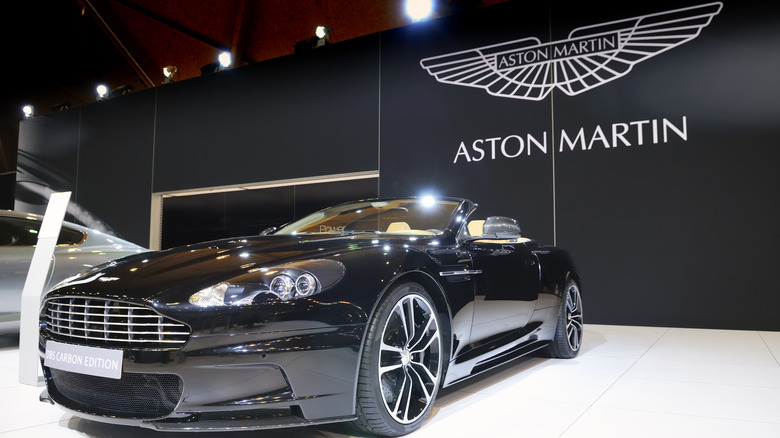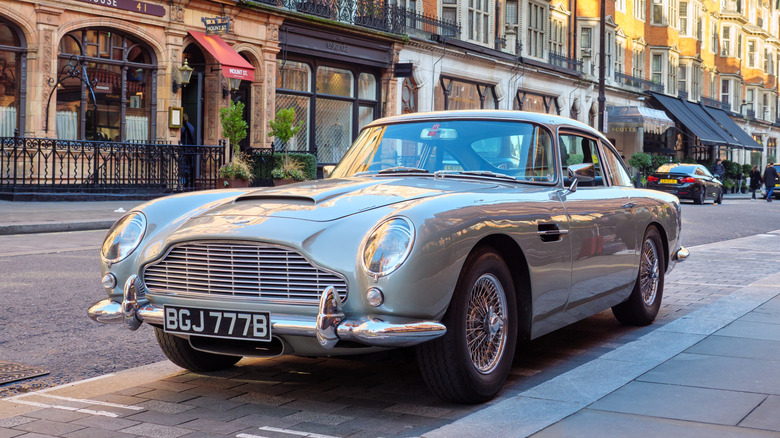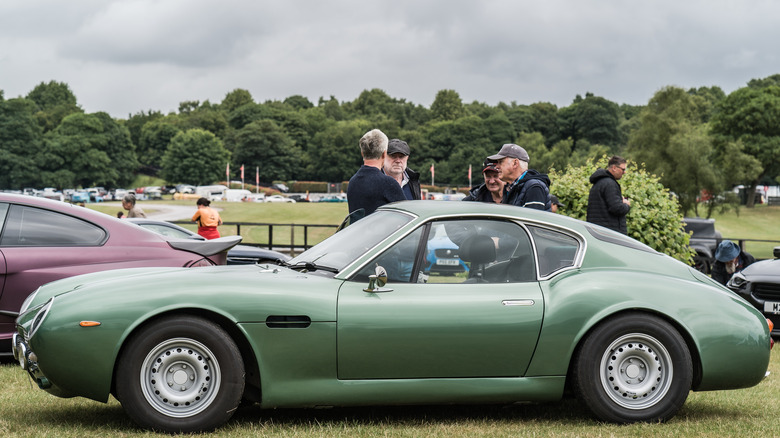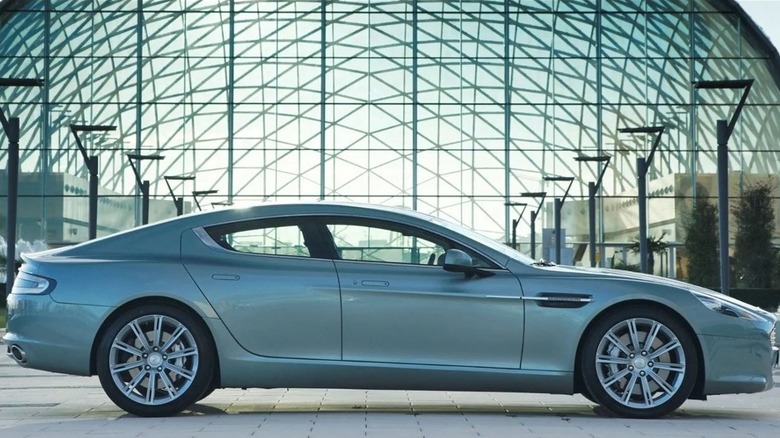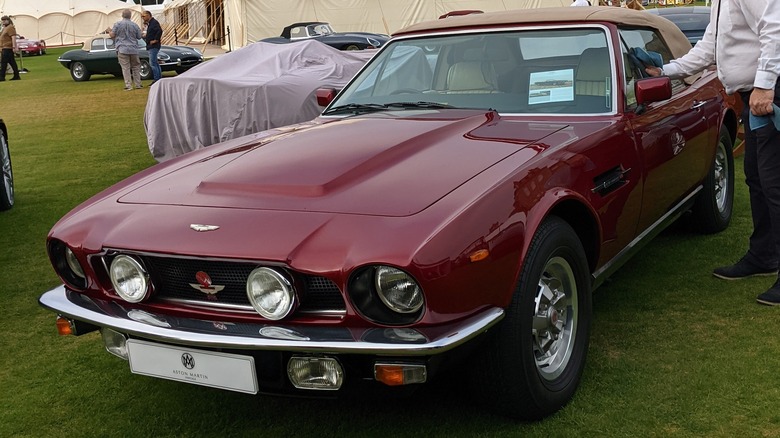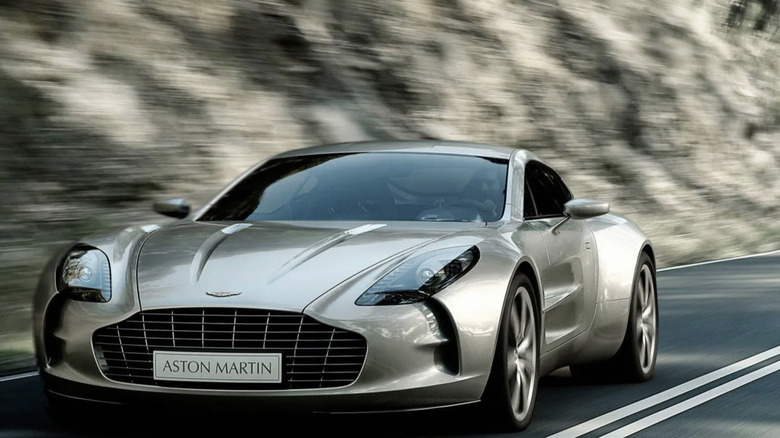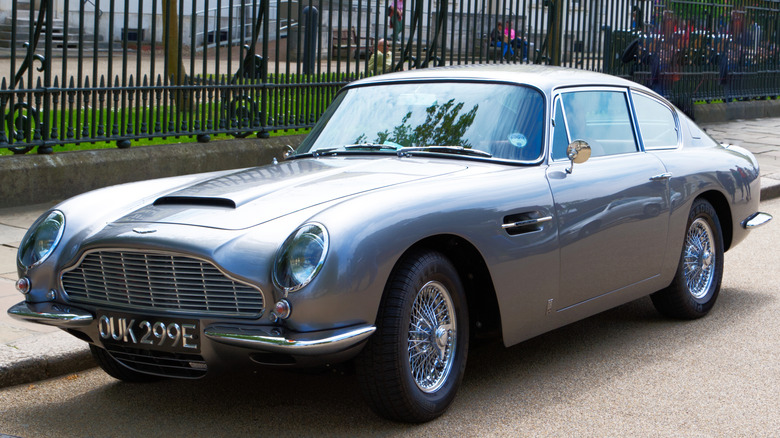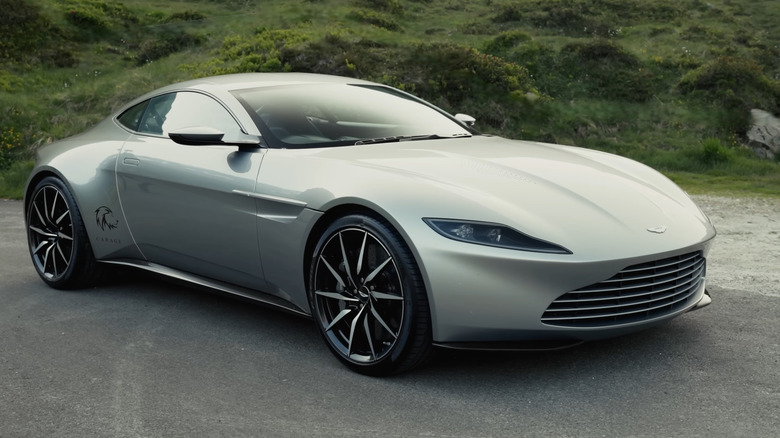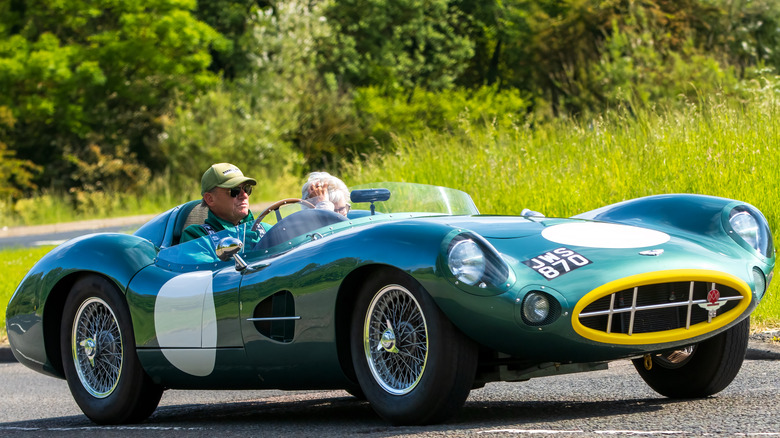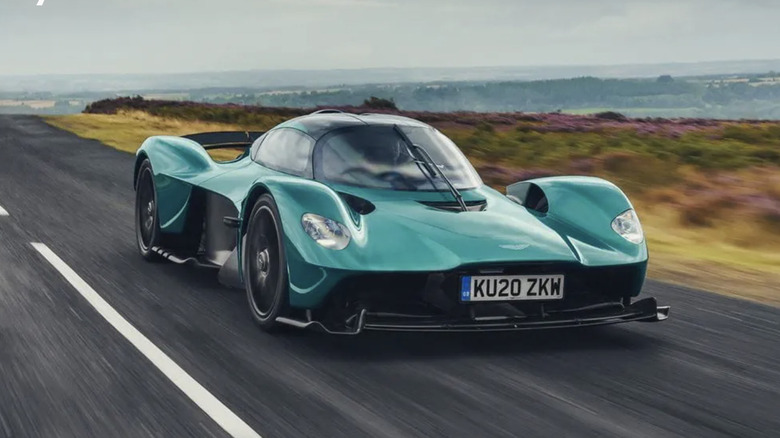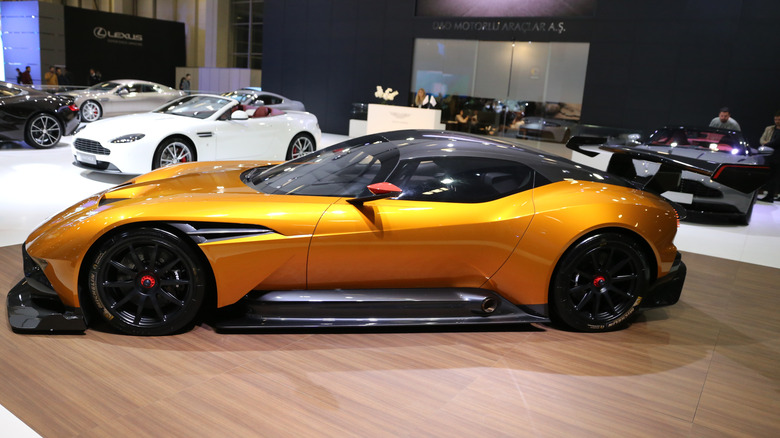The 10 Best Looking Aston Martin Models Ever Designed
Aston Martin — very few brands can match the British car maker's legacy of iconic automotive design. Its models often strike a balance between classic and modern, with designs that are as much about aesthetics as engineering. From the sweeping curves of a DB5 to the aggressive stance of a Vantage, each model tells a story of craftsmanship and attention to detail.
But not all Aston Martins are created equal when it comes to looks. Some models set new standards in automotive design, which has influenced not just the brand but also the industry as a whole. These are the cars that turn heads on the street, that people dream about driving, and that define what it means to be a "best looking" car.
Coming up is a list of the 10 most stunning Aston Martins ever crafted — solely based on the unique details that make each model truly special. And the designs in this lineup are sure to leave you in awe — no matter if you are a die-hard Aston fan or simply someone who appreciates exquisite design.
Aston Martin DB5
First introduced in 1963, the Aston Martin DB5 quickly became a cultural icon, and it's very easy to see why. The DB5 was the car of choice for James Bond, making its first appearance in "Goldfinger." The gadgets in the movie — like the revolving license plates and hidden weapons — may have been pure fiction, but they made the DB5 an automotive legend.
One of the most recognizable features of the DB5 is its front grille, which gave the car a distinctive, almost predatory look. The car's chrome accents added just the right amount of flash without being over the top. Aston Martin's DB5 engine was a 4.0-liter DOHC straight six that was capable of pushing the car to speeds of around 142 mph — this was seriously impressive for its era.
Fun fact: The company only ever made around 1,000 DB5s, so spotting one today is like finding a needle in a haystack! The DB5 nails that trifecta of style, power, and heritage, and that is what makes it one of the most beautiful Aston Martins ever made. No wonder collectors are willing to pay top dollar for one in good condition.
Aston Martin DB4 GT Zagato
The Aston Martin DB4 GT Zagato is a unique concoction of British engineering and Italian design. It is one of the most striking cars ever produced by Aston Martin. This model was first unveiled in 1960 and was a collaboration between Aston Martin and Italian coachbuilder Zagato. The goal was simple: create a lighter and faster version of the DB4 GT.
The DB4 GT Zagato's design features a curvier and more muscular body with a distinctive double-bubble bonnet — one of Zagato's trademarks. The front end looks aggressive with a wide grille and headlights that almost seem to glare at you.
As far as the performance goes, the car was certainly no slouch. It was powered by a 3.7-liter inline-six engine capable of producing around 314 hp. The car could reach speeds of up to 153 mph, which was quite remarkable for a road car in the early 1960s.
One interesting fact about the DB4 GT Zagato is that only 19 units were originally built, which makes it one of the rarest Aston Martins. This scarcity has only added to its mystique and appeal over the years. It has become a prized possession for collectors, and among the most expensive Aston Martins ever sold at auctions.
Aston Martin Rapide
The Aston Martin Rapide is proof that a four-door car can be both practical and undeniably beautiful. The Rapide was introduced in 2010 and at first glance, it looks like a typical Aston Martin — sleek, low-slung, and sporty. But what sets it apart is its elongated shape, which accommodates four doors without compromising the brand's signature style.
The interior of the Rapide does not disappoint either. In spite of being a four-seater, the Rapide maintained a cocoon-like feel. The car made sure everyone felt comfortable with each passenger having their own hand-trimmed seat and personal climate control — talk about making the ride pleasant for all! On the practical side, the trunk was not just your average storage space. With just a press of a button, the rear seats fold down flat — transforming 317 liters of luggage room into a generous 886 liters.
Another noteworthy detail is the Rapide's V12 engine, which produced 470 horsepower. This allowed the car to hit 184 mph — which was remarkable for a car that can comfortably seat four adults. Fast forward to 2022 and the four-door Rapide has transformed into the luxurious Rapide AMR. It proudly carries forward the iconic V12 engine but now delivering a hefty 595 hp and 465 lb-ft of torque.
Aston Martin V8 Vantage
The Aston Martin V8 Vantage is one of those cars that turn heads not just for its performance, but for its sheer presence on the road. Introduced in 1977, the Vantage was Aston Martin's first significant departure from its "DB" series
The car had an aggressive grille, a large hood scoop, and a sculpted spoiler, which gave it a powerful look that was unlike anything else on the road. The car's revised engine components delivered a significant boost in power and torque, allowing it to reach a top speed of 170 mph and go from 0 to 60 mph in just 5.2 seconds. These performance figures were not just impressive, they were record-breaking — it made the V8 Vantage the fastest four-seater production car in the world at the time. This legacy of engineering excellence is a key reason why Aston Martin made the switch to Mercedes AMG engines in their more recent models.
The partnership with the Italian coachbuilder Zagato in the mid-1980s took the V8 Vantage's design to another level. The limited edition Vantage Zagato brought a more aggressive and striking style to the already stunning model. This collaboration resulted in a car that was both a collector's dream and a statement piece — and only 50 sedans and 37 convertibles were produced.
[ Featured Image by Calreyn88 via Wikimedia Commons | Cropped and scaled | CC BY-SA 4.0 ]
Aston Martin One-77
The Aston Martin One-77 is often hailed as one of the most stunning cars the brand has ever produced, and it is easy to see why. With only 77 units made, its exclusivity alone makes it stand out, but it is the design that truly captures attention. It is why you'll hardly find any Aston Martin One-77s on the road.
The One-77 was unveiled in 2009. Its silhouette is aggressive yet elegant — a balance that Aston Martin seems to have perfected with this model — the design highlights an insane attention to detail.The front grille — a signature of Aston Martin — is larger and more pronounced. The headlights are sleek and modern, blending seamlessly with the car's lines. Every curve and contour of the car is not only purposefully designed for aerodynamic efficiency, but also seamlessly integrated into a carbon fiber monocoque chassis with an aluminum body.
Underneath its beautiful exterior, the One-77 is powered by a 7.3-liter V12 engine, capable of pushing the car to over 220 mph. But it is not just the power that makes this car special — it is the way it looks doing it. The One-77 is a car that turns heads, whether it is cruising down the highway or parked at a show.
Aston Martin DB6
The Aston Martin DB6, introduced in 1965, stands out as one of the most visually striking cars ever designed. While it clearly draws from its predecessors, the DB6 has unique touches that make it a classic in its own right.
The DB6 was the "it" car of its time, turning heads wherever it went. Royalty like King Charles and even music legends like Mick Jagger and Paul McCartney owned the DB6, which further solidified its iconic status. The DB6 was also the first model to feature the iconic "Volante" convertible option, introducing a new level of versatility and open-top elegance to the Aston Martin lineup.
One of the most distinctive features is the Kamm tail rear spoiler. This was not just about looks — the design choice came straight from the wind tunnel, reducing lift at the rear wheels by over 30% and improving high-speed stability. The split front and rear bumpers gave the car a more refined look and the redesigned oil cooler aperture added a subtle touch of aggression to the front end.
Another key change was the DB6's longer wheelbase and higher roofline. These adjustments were not just for show — they made the DB6 more practical by offering increased rear passenger space without compromising the car's sleek profile. This combination of form and function is a big part of what makes the DB6 so special.
Aston Martin DB10
The Aston Martin DB10 was never intended for the public, yet it has become one of the most iconic models in the brand's history. Designed specifically for the James Bond film Spectre, the DB10 was created to embody the essence of what a modern Aston Martin should be — sleek, powerful, and undeniably stylish.
Visually, the DB10 is a striking departure from previous Aston Martins. Its design is more aggressive and futuristic, with sharp lines and a low, wide stance that gives it a commanding presence. The front end is dominated by a large grille and narrow, angular headlights that give the car a menacing look. The smooth, sculpted bodywork flows seamlessly from front to rear, ending in a tapered back with quad exhausts.
Underneath its striking exterior, the DB10 is based on the V8 Vantage chassis, with a 4.7-liter V8 engine delivering 430 hp. While it was not the fastest or most powerful Aston Martin, the DB10 was more about style and exclusivity than outright performance.
One of the most interesting aspects of the DB10 is that only 10 units were ever produced, which makes it one of the rarest Aston Martins. Eight of the units were used in the filming of Spectre, while two were kept by Aston Martin for promotional purposes. This rarity has made the DB10 highly sought after by collectors, in spite of the fact that it was never sold to the public.
Aston Martin DBR1
The Aston Martin DBR1 stands out as one of the most beautiful cars ever made — not just because of its performance on the track, but because of its pure and understated elegance. Its low-slung body with long and sweeping curves give it a look that is both aggressive and graceful — truly an icon of automotive design.
The long bonnet, which covers a compact, low-sitting engine, gives the car a sleek and aerodynamic profile. Its body was formed from incredibly thin 20-gauge aluminum — a choice made to reduce weight, unlike the heavier 16-gauge used in the D-type. This made the DBR1 a formidable contender on the race track.
One of the most remarkable facts about the DBR1 is its racing pedigree. It is the most famous for its victory at the 1959 24 Hours of Le Mans, where it took the checkered flag, securing Aston Martin's only overall win at this prestigious race. The DBR1 also claimed victory at the 6 Hours of Nürburgring race — not just once but three times, securing its reputation as one of the greatest sports cars of its time.
Only five DBR1s were ever built, and that makes it an incredibly rare and valuable piece of automotive history. In fact, in 2017, one of these models, the 1956 Aston Martin DBR1 was sold at auction for a record-setting $22.5 million — making it one of the most expensive British cars ever sold.
Aston Martin Valkyrie
The Aston Martin Valkyrie is a car that pushes the boundaries of design and engineering. Launched as a collaboration between Aston Martin and Red Bull Racing, the Valkyrie is more than just a hypercar — it is a glimpse into the future of automotive design. Unveiled in 2016, this car was created with one goal in mind — to be as close to a Formula 1 car as possible, while still being street-legal.
The Valkyrie's design is unlike anything else on the road. With its extreme aerodynamics, low-slung body, and aggressive stance, it is a car that looks like it belongs on a racetrack. The entire design is focused on reducing weight and maximizing downforce, and the car is almost entirely made of carbon fiber. The teardrop-shaped cockpit and the enormous rear diffuser are clear indications that every aspect of this car was designed with speed and performance in mind.
The Valkyrie is powered by a naturally aspirated 6.5-liter V12 engine, developed by Cosworth, which produces a staggering 1,140 horsepower. What is even more remarkable is that this engine revs to an incredible 11,100 RPM — a figure that is typically reserved for racing cars — making it one of the fastest cars built with a V12 engine.
The interior of the Valkyrie is as radical as its exterior. The seating position is similar to that of a Formula 1 car, with the driver and passenger sitting almost in a reclined position. The steering wheel houses most of the controls, emphasizing the car's focus on driving experience.
Aston Martin Vulcan
The Aston Martin Vulcan commands attention, both for its extreme design and its raw power. Unveiled in 2015, the Vulcan was Aston Martin's answer to the world of track-only supercars. With only 24 units ever made, it is one of the rarest and most exclusive models the brand has ever produced.
The Vulcan's design is aggressive, to say the least. Every aspect of the car is engineered for performance, with aerodynamics playing a key role. The car's wide, low stance, massive rear wing, and prominent front splitter make it clear that the Vulcan is built for speed. The sharp lines and angular bodywork give it a menacing appearance, while the extensive use of carbon fiber keeps the car lightweight and nimble on the track.
Underneath its striking exterior, the Vulcan houses a beastly 7.0-liter V12 engine that produces over 800 hp. This engine was developed in-house by Aston Martin and is naturally aspirated, delivering a pure and unfiltered driving experience. The Vulcan's power is matched by its advanced aerodynamics, which provide incredible downforce, ensuring the car stays planted even at high speeds.
The Vulcan is not street-legal. This car was designed purely for the track, and Aston Martin offered extensive training to buyers to help them master its immense power. The Vulcan is equipped with a fully adjustable suspension, race-spec brakes, and a sophisticated traction control system, all of which allow the driver to fine-tune the car's performance.
